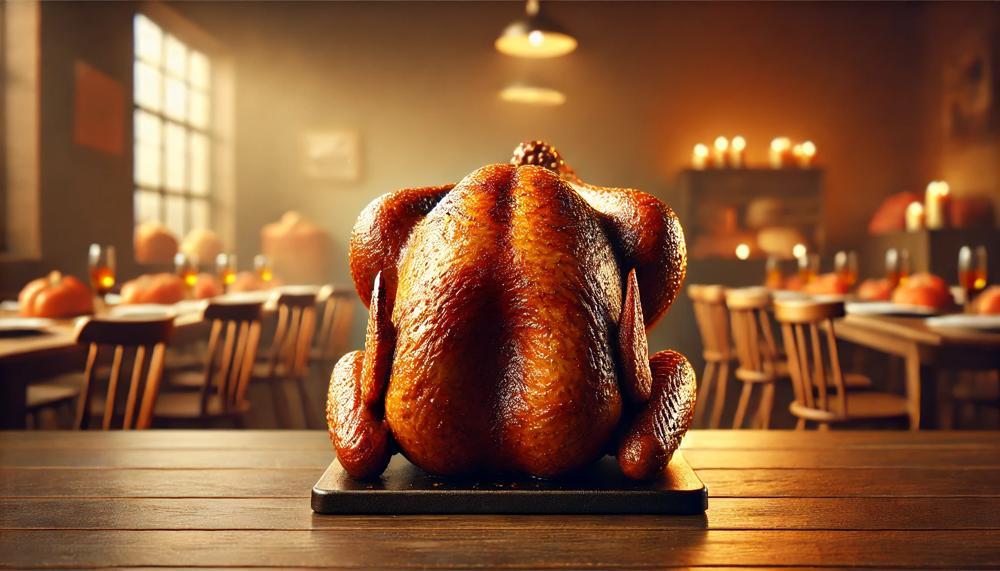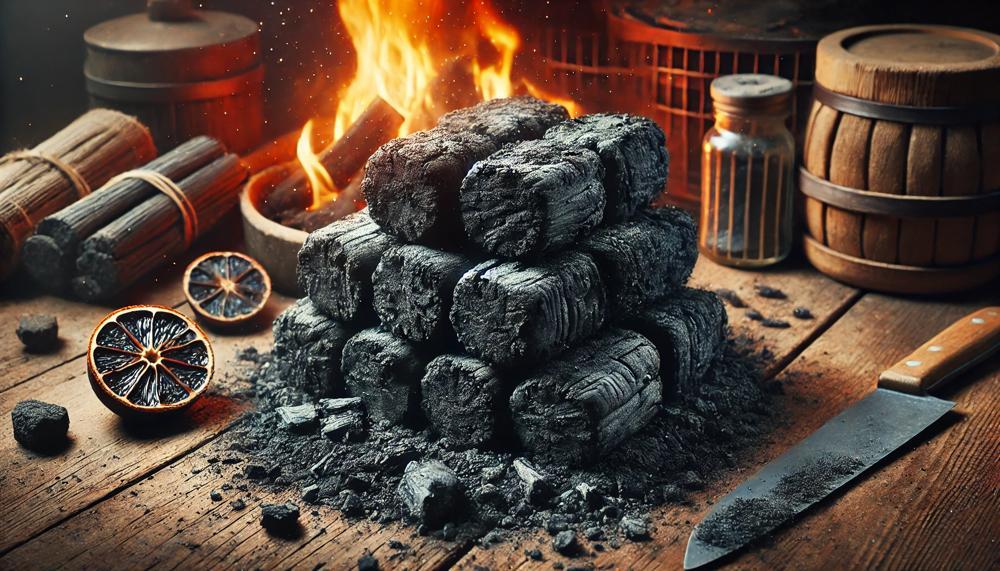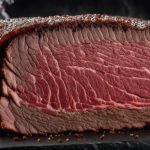Are you wondering if it’s okay to slow smoke a turkey? The answer is a resounding “Yes.” Slow smoking a turkey can elevate your holiday feast to a whole new level of flavor and tenderness. Imagine sinking your teeth into juicy, smoky meat that practically melts in your mouth. It’s not just a meal; it’s an experience.
In this article, we’ll delve into the art of slow smoking a turkey, covering everything from temperature control to achieving that coveted crispy skin. Here’s what you can expect to learn:
- The benefits of slow smoking over other cooking methods
- Step-by-step instructions for preparing your turkey, including a special tip for crispy skin
- Common pitfalls to avoid when smoking a turkey
- Tips for selecting the right wood chips to enhance flavor
- Insights into smoking times and temperatures, based on practical experience
- Further resources for fine-tuning your technique
Whether you’re a seasoned pitmaster or a first-time smoker, mastering the art of slow smoking a turkey is within your reach. Get ready to impress your guests and savor a turkey that’s tender, flavorful, and unforgettable. Let’s dive in and unlock the secrets to a perfect slow-smoked turkey.
Contents
Is It Ok to Slow Smoke A turkey?
Yes, it is absolutely okay to slow smoke a turkey. In fact, many people prefer this method because it can result in a turkey that is moist, flavorful, and has a delicious smoky taste. Here are some tips for slow smoking a turkey:
- Preparation: Make sure the turkey is fully thawed and patted dry. You can rub the turkey with olive oil and your choice of seasonings.
- Temperature: Set your smoker to around 225 degrees Fahrenheit. The key to a great smoked turkey is indirect heat and consistent temperatures.
- Smoking: Place the turkey on the grill and close the lid. Smoke the turkey for about 30 minutes per pound. Ensure you have plenty of fuel and wood chips prior to smoking the turkey.
- Resting: After smoking, allow the turkey to rest for about 15 minutes before slicing and serving.
Remember, the most important thing is to use a grill where you can create indirect heat, maintain consistent temperatures, and add in the element of wood smoke.
Avoid a roasting pan
When it comes to slow smoking a turkey without using a roasting pan, there are several effective alternatives that can deliver exceptional results:
- Use a Smoker: Employing a dedicated smoker is an excellent way to slow smoke a turkey. This method allows for precise temperature control and ensures consistent exposure to smoky flavours throughout the cooking process. It’s ideal for achieving that authentic barbecue taste.
- Grill it: Utilising a grill for slow roasting the turkey offers a dual benefit of smokiness and a grilled flavour profile. This method involves indirect heat, where the turkey is placed away from the heat source, allowing it to cook slowly while absorbing the smoky essence.
- Make makeshift smoker: Create your own smoker setup using wood chips and aluminum foil on a regular grill or in an outdoor cooking space. This DIY approach can replicate the smoking environment of a smoker, imparting the turkey with desirable smoky notes.
Don’t truss the turkey
When slow smoking a turkey, it’s advisable not to truss it. Trussing, which involves tying the bird’s legs together with kitchen twine, may seem like a conventional approach for oven roasting but isn’t ideal for slow smoking. Here’s why:
- Uneven Cooking: Trussing restricts the airflow around the turkey’s legs, causing uneven cooking. This results in the breast meat becoming dry and overcooked by the time the legs reach the desired doneness.
- Appearance vs. Function: Trussing is primarily done for aesthetic reasons in traditional roasting, where the bird maintains a compact shape. However, in slow smoking, allowing the turkey to remain untrussed ensures that it cooks more evenly and absorbs the smoky flavours throughout.
- Flexible Carving Options: By not trussing the turkey, you have more flexibility in how you carve it after smoking. Whether you prefer to carve it in the kitchen or present it whole at the table, leaving it untrussed helps maintain juiciness and even cooking.
For the best results when slow smoking a turkey, skip the trussing step to achieve tender, flavourful meat evenly infused with smokiness.
Don’t stuff the turkey
| Answer: Yes, it is safe to slow smoke a turkey without stuffing it. Slow smoking allows the turkey to cook evenly while imparting a delicious smoky flavor throughout the meat. Here are key reasons why it’s advisable not to stuff the turkey when slow smoking: | ||
| Reasons | Details | Source |
| Even Cooking | Leaving the turkey un-stuffed promotes even heat distribution, ensuring both the outer layers and the inner parts of the turkey cook thoroughly without risking undercooking or overcooking. | FoodSafety.gov |
| Reduced Microbial Risk | Stuffing can create a potential food safety hazard as it might not reach a safe temperature throughout during the slow cooking process, leading to risks of bacterial growth. | CDC Food Safety |
| Enhanced Smoky Flavor | Without stuffing, the smoky aroma and flavor can permeate the turkey meat more effectively, providing a more pronounced and enjoyable smoky taste. | Personal Experience |
Slow smoking is a fantastic method for cooking turkey as it ensures tender, juicy meat with a delightful smokiness. By avoiding stuffing the turkey, you not only enhance the flavor but also reduce potential food safety risks associated with slow cooking.
Choose the best wood pellets
When selecting the best wood pellets for slow smoking a turkey, several critical factors must guide your choice.
Firstly, opt for hardwood pellets such as cherry or oak for their gentle, sweet smoke that enhances rather than overpowers the turkey’s flavour. For example, Sweet cherry wood is renowned for its refined aroma, making it an excellent choice.
Secondly, consider the intensity of the smoke flavour. Choose pellets like Louisiana Grills Texas Mesquite, which offer nuanced and intense flavours that complement turkey well. These pellets add depth without dominating the bird’s natural taste.
Thirdly, evaluate the heat output of the pellets. Pellets such as Bear Mountain Oak Wood are known for their consistent heat generation, crucial for slow smoking to ensure even cooking and prevent the meat from drying out.
Additionally, look for versatility. Pellets such as BBQ’rs Delight Orange Wood are prized for their ability to pair well with various meats, enhancing the overall culinary experience.
Lastly, ensure you select high-quality pellets with minimal filler content. This ensures cleaner burning and maximizes the smoke flavour imparted to the turkey.
Don’t forget to brine
| Benefit | Description |
| Tenderizes Meat | Brining turkey before slow smoking allows salt to break down muscle proteins, resulting in a more tender texture. |
| Enhances Juiciness | The salt in the brine helps the turkey retain moisture during the smoking process, preventing it from drying out. |
| Flavor Infusion | Whether wet or dry brining, both methods impart additional flavors into the turkey, enhancing its taste profile. |
| Improved Texture | Dry brining, especially, helps maintain crispy skin while preserving natural juices, unlike wet brining that may soften the skin. |
Avoid carving
| Let it Rest: | After smoking, allow the turkey to rest for at least 20 minutes tented with foil. This helps redistribute the juices throughout the meat, making it juicier and easier to carve. |
| Use the Right Tools: | Invest in a sharp carving knife and a sturdy carving fork. A good knife ensures clean slices without shredding, and a fork holds the turkey securely while you carve. |
| Slice Against the Grain: | Identify the grain direction of the turkey breast and carve against it. This technique yields tender slices that are easier to chew. |
| Remove Legs and Wings First: | Start by removing the legs and wings. Use your knife to cut through the joints rather than hacking through the bones, which maintains the presentation and makes carving simpler. |
| Carve the Breast: | Slice the breast meat thinly and evenly. Begin parallel to the breastbone and use smooth, deliberate strokes to maintain the integrity of each slice. |
| Serve Promptly: | Once carved, transfer the slices to a warmed platter and serve promptly. This keeps the meat warm and preserves its juiciness. |
Use a meat thermometer
The best way to use a meat thermometer while slow smoking a turkey involves a meticulous process to ensure the turkey is cooked to perfection without being overdone. Below is a step-by-step guide:

- Insertion Point: Firstly, place the thermometer deep into the thickest part of the turkey, typically the breast or the thigh, avoiding bone and fat for the most accurate reading.
- Reading the Temperature: Begin to slowly withdraw the thermometer through the meat. As the tip progresses, you’ll observe the temperature initially spike and then decrease. This change is critical in identifying the coldest part of the meat.
- Identifying the Correct Temperature: Continue to retract the thermometer until the temperature reading reaches its lowest point. This is the crucial moment where you find the true internal temperature of the thickest meat.
- Minimum Internal Temperature: Ensure the lowest temperature reads at least 75°C (165°F). This is the safe minimum internal temperature to guarantee that your turkey is both safe to eat and deliciously juicy.
Pellet Smoked Turkey
Pellet smoking a turkey involves crucial steps to ensure a flavorful and successful cook. The primary considerations include maintaining the right temperature, choosing suitable wood pellets, and monitoring internal temperatures to achieve optimal doneness and flavor. Here’s a detailed breakdown:
- Temperature Control: Cook the turkey at an ideal temperature of 325°F. This ensures the turkey cooks evenly while achieving a beautifully bronzed skin.
- Wood Pellet Selection: Opt for wood pellets like apple, pecan, or hickory. Apple wood pellets are especially recommended as they complement the turkey’s natural flavors without overpowering them. Avoid mesquite, which can be too intense.
- Internal Temperature: Aim for an internal breast temperature of 160°F. This ensures the meat is juicy and safe, rising to the USDA recommended 165°F as it rests.
Conclusion
In the realm of culinary arts, slow smoking a turkey is not just a method, but a transformative experience that guarantees a feast memorable for its succulence and depth of flavor. This technique, which involves a gentle and prolonged exposure to smoke, ensures that every bite of the turkey is infused with a rich, smoky essence, enhancing both its taste and texture. Opting for slow smoking over traditional cooking methods like roasting allows the turkey to maintain its moisture and tenderness, making it a superior choice for those special gatherings.
To achieve the best results, it’s vital to focus on temperature control and choosing the right wood chips, which contribute significantly to the flavor profile of your turkey. Cherry or oak wood, for example, can add a subtle sweetness that complements the natural flavors of the turkey without overpowering them. Moreover, by forgoing trussing and stuffing, you allow for more even cooking and smoke penetration, ensuring that every part of the turkey cooks perfectly.
By embracing these techniques, you’re not just cooking; you’re crafting an unforgettable culinary masterpiece that will captivate the palates of your guests. So, this holiday season, why not take your festive meal to the next level with the art of slow smoking?






